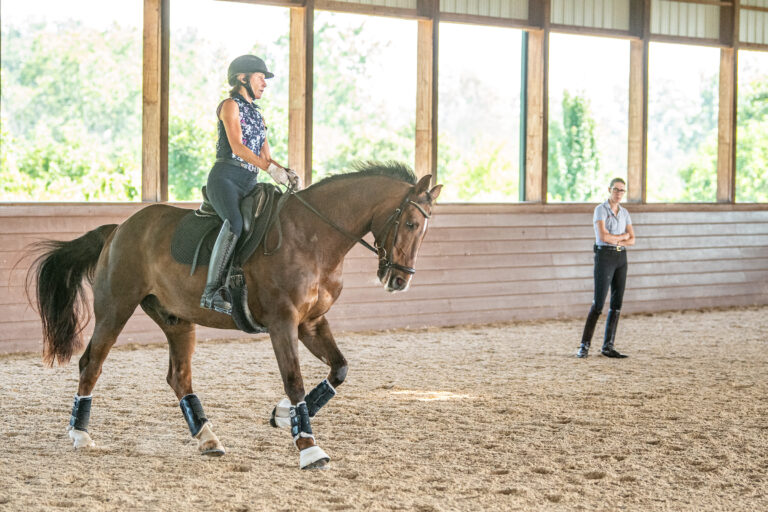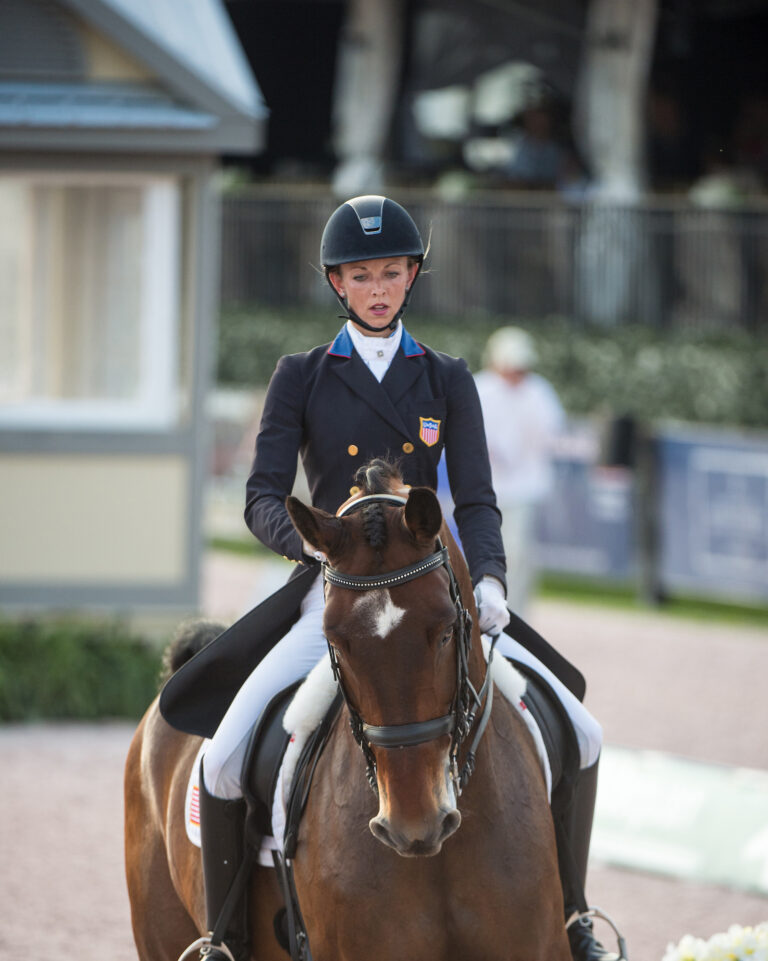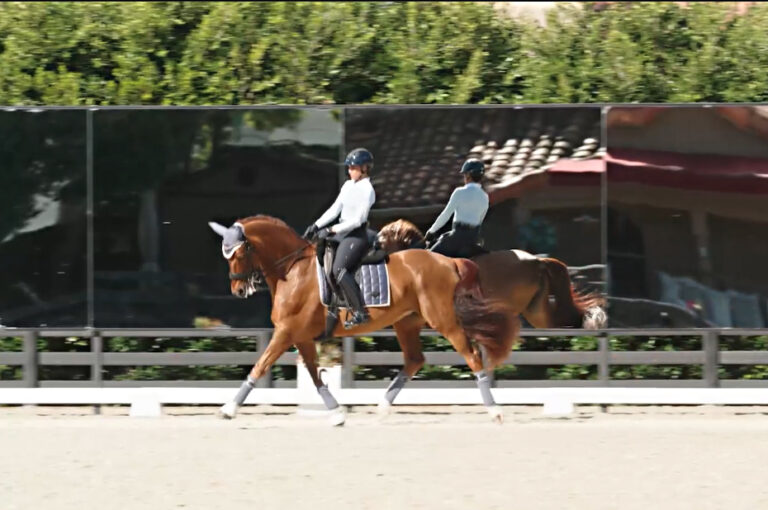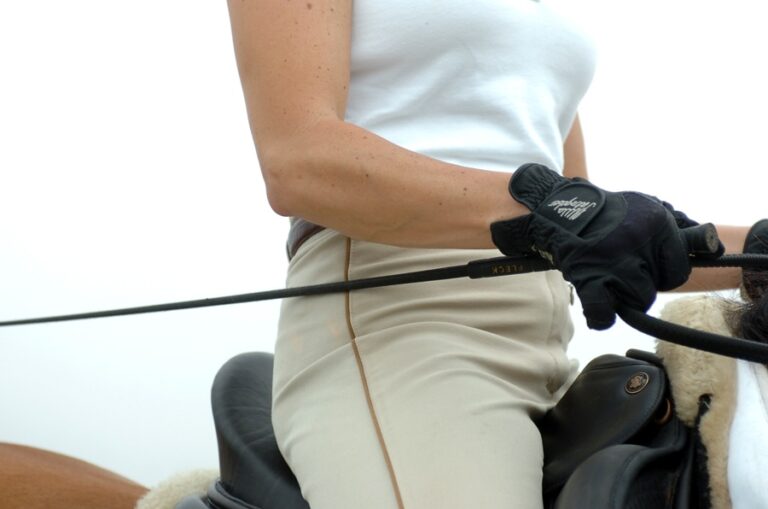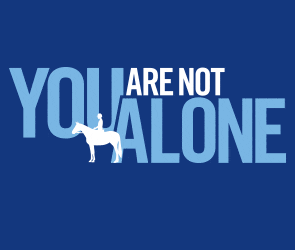Editor’s note: The history of the Dressage World Cup is closely connected to the history of the Grand Prix Freestyle. At the 1984 Summer Olympics in Los Angeles, California, dressage enthusiast Joep Bartels witnessed Germany’s Reiner Klimke and Ahlerich doing the one-tempi changes to the Olympic anthem. Inspired by this, Bartels thought of creating a freestyle dressage competition. One year later, the first Dressage World Cup was held in ’s-Hertogenbosch, the Netherlands. In anticipation of the 2015 Reem Acra FEI World Cup™ Dressage Finals in Las Vegas, Nevada, this April, Dressage Today brings you a three-part series on the freestyle.
Over the years, the musical freestyle has helped make dressage the exciting spectator sport it is today because it is fun for the horse, rider and audience. Even an audience without an understanding of dressage can appreciate a well-choreographed and beautifully performed freestyle.
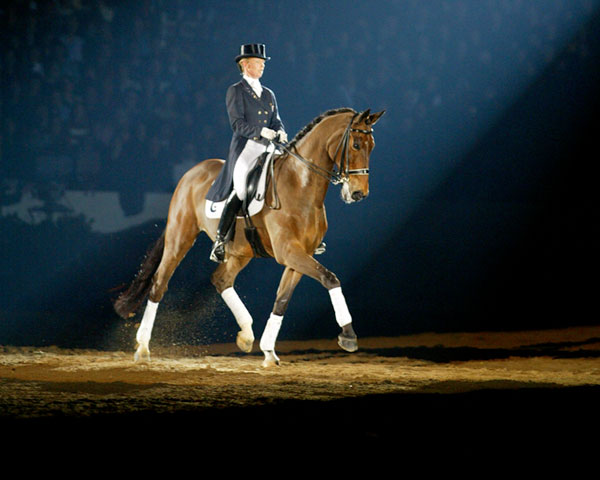
As an Amazon Associate, Dressage Today may earn an affiliate commission when you buy through links on our site. Products links are selected by Dressage Today editors.
If you hear your favorite music and it makes you want to tap your toes or even dance around, making a musical freestyle may be for you. Freestyles allow riders of all levels to show off their creativity because you choose the music and design the choreography. During the process, I have found you learn more about dressage, your horse and yourself as a rider.
Know the Requirements
The freestyle is judged on its technical execution and its artistic impression. The score sheets, located in your USDF Rulebook, can be used as guidelines as you design your freestyle (See “Technical Execution” and “Artistic Impressions”). The technical execution lists the concrete required movements for your level, while the artistic impression reflects on the choreography and artistic use of the music that highlight your horse and the movements.
When you make your freestyle, choose a level that you can perform well, either the level at which you are currently competing or a level below. If you perform the required technical movements well, you can score higher in the artistic impressions because you can achieve harmony. You and your horse can then interpret the music, which is only possible once you are competent in the technical requirements.
The Tempo
Ideally, each of your horse’s gaits has a regular rhythm and steady tempo (See “Useful FEI Definitions”). The rhythm is the characteristic footfalls of the gait. For example, the walk is four-beat, the trot is two-beat and the canter is a three-beat gait. The tempo is the speed of the rhythm and is measured in beats per minute or BPM. To create a freestyle, you measure the BPM of each gait because when you pick out music, you want the downbeat of the music, or the beat you would tap your toe to, to match the tempo of the horse’s walk, trot or canter as well as, later on, the piaffe and passage. As you move up the levels, the degree of collection increases and your horse’s tempo slows slightly as he develops cadence. The clear rhythm and tempo of a musical piece help the horse and rider stay in a consistent tempo throughout the ride. Therefore, riding to music is a valuable tool for riders at all levels to develop the correct, consistent tempo.
A metronome, which measures BPM, can be downloaded onto a smartphone or you can purchase an inexpensive one from a musical-instrument store. To match the beat of the metronome to the horse’s tempo, I count as the horse’s front feet land. The beats of the front feet are easier for the spectators to recognize and the judges to evaluate even though, as riders and trainers, we are more attentive to the hind legs. When you use the metronome, you may find the horse’s tempo is not consistent. Choose the one steady tempo in which the horse moves the best.
At the walk, measure the beat of both front legs. In the canter, measure the leading front leg. The walk and the canter tend to range from 92 to 104 BPM, and some horses have the same tempo in the walk and the canter. If this is the case, you can use the same song for both gaits, with a quieter section for the walk. This adds to the seamlessness of the ride. Other horses have a different BPM in the walk and canter, in which case you need different music for each.
For the trot, measure the beat of both front legs. The average warmblood trot is around 150 BPM. A small horse or pony tends to be quicker, up to 160 BPM, and a lofty horse may be 146 to 148 BPM. The piaffe and passage, the hallmark of the Grand Prix, have their own music. Measure the beat of both front legs. Most horses measure near 120 BPM.

Choose the Music
Toe-tapping music is great for freestyles. The beat is easy to identify and easy to ride to because you can not only hear it, but feel it. The beat of the music helps the horse and rider stay in the tempo. However, music that has a less-obvious downbeat is also appropriate for some horses. The music should also match the mood of the horse and rider pair. For example, cute Disney-type music is suitable for a pony or a petite young rider, but it is inappropriate for a large and powerful warmblood.
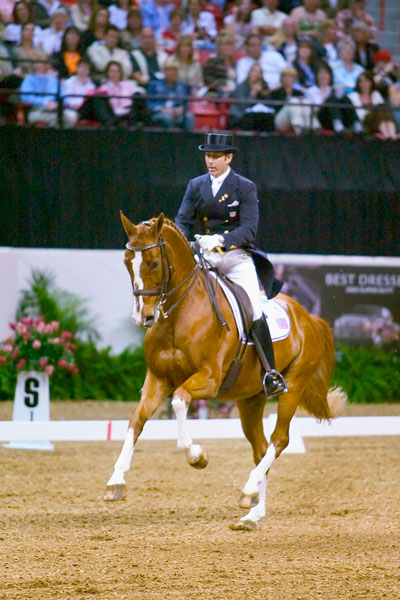
When you choose the music, keep these guidelines in mind:
Find music that is fun. Popular music is often fun because people recognize it. With the resources we have now on the Internet, anyone can browse through all different types of music, from soundtracks to classics and more.
Choose music that enhances the horse. When you find the right music, you can feel that your horse moves better with the music playing than without. The horse tells you, when he moves with more expression, that he enjoys dancing to that particular music.
Pick instrumental music. When there is a vocalist, the audience ends up listening to the words and it distracts from the ride. You can use minimal lyrics, for example at the entrance, that are a little bit fun and bring the crowd in.
Make sure all the music is in the same style. For example, do not use a rock-and-roll song for the trot and a jazz song for the canter. The music for each gait should blend cohesively. Music by the same artist or group is ideal. Then, when you simply listen to the music without the horse, it sounds like
a medley of songs.
Choose attention-grabbing music for the entry. This sets the mood for the ride. The horse recognizes his own music and starts moving to the beat. You want to get the attention of the audience and the judges. Also, if there is ever a mistake in the sound booth and the wrong music starts playing, the rider notices right away. In the first halt, I prefer to keep the music playing. Some riders really like the silence there, but I think the music quietly playing supports the halt and salute. For an impressive ending to your freestyle, find music with a finale. It is a nice touch if the rider can time the salute with the final downbeat of the music.
Create the Choreography
The choreography can be designed before or after the music is chosen and either by you or with the help of an experienced trainer or freestyle designer. To chart your course, you can use the map of dressage arenas to design the movements and visualize how much of the arena is used. Creativity is rewarded, and you can put the movements together in unique ways, not necessarily the way they are presented in the standard tests. I like to draw the movements on the map with different colored pens for each gait, trying to use the whole arena. You can see on the map that if you covered the left and right sides, top and bottom, the choreography does not have to be exactly symmetrical because you don’t want it to look like a standard test set to music. If you design unusual lines or non test-like movements, make sure each of the technical requirements is recognizable. Stay within the time limit, which is printed on the technical execution score sheet.
Because you get to choose the order of the gaits and movements, design the choreography so it helps the horse perform his best. The sequence of gaits in most standard tests is trot−walk− canter, but the freestyle can be in any order, for example canter−walk−trot. The trot and canter work can be split up, such as trot−canter−walk−canter−trot, which can provide variety, but makes for more musical edits, because you must cut and paste more musical phrases.

The degree of difficulty is evaluated by the judges under the artistic impression. If the movements become too difficult and the ride deteriorates, not only is there a risk of technical mistakes but the overall harmony suffers. Add challenging movements to the freestyle only if you and the horse can perform them well under the pressure of competition.
Edit the Music
Edit the music or digitally cut and paste parts of the songs together so the music matches your choreography. There are many useful and affordable software programs for music editing. I have used Sony’s “Sound Forge” with success for many years.
Editing is so much more accessible now than it was a decade ago; it can be done right from your personal computer. However, even with all this good technology, you should have, or work with someone who has, enough musical background to make the edits. I work with my husband, Ed Iarusso, who is a musician. He understands exactly where to make the edits within the songs and how to connect the songs without cutting the music mid-phrase. Poorly edited music makes for a choppy sound and disrupts the ride.
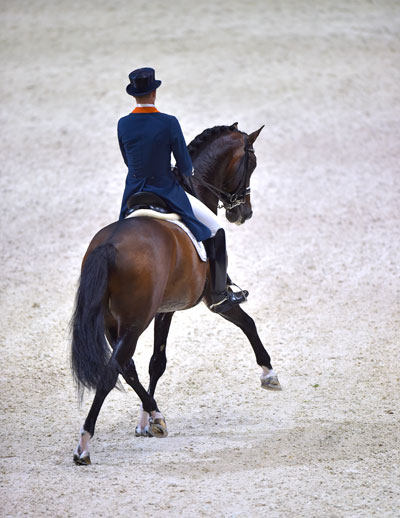
Find highlights in the music that complement movements in your freestyle ride. You can listen for subtle changes in instrumentation that can correspond with the lateral work or the extensions (or leg-yields and lengthenings at First Level). When the instrumentation changes in the music, it indicates a change in the ride, for example that you begin to half-pass. I like to use part of the song with a crescendo, which supports the extensions because the music is bolder and has more body.
Here is how to put the musical sections together:
1. Make a video of yourself riding the freestyle pattern you designed in a regulation 20- by 60-meter arena. The video should show you and your horse performing as well as possible.
2. Measure how many seconds of music you need for each gait. I recommend you use software that allows you to see the video and the beats of the music on the same screen. That way, you can lay down the music with the choreography and then cut the music at exactly the right place. Remove sections of the music that either are extra or do not support the horse.
3. Fine-tune the piece of music by cutting and pasting musical highlights you have identified that correspond with the movements they complement. For example, you can move a specific phrase within the song so it plays when the lateral work is choreographed. Edits within the song can enhance the ride as long as they are done at the right time and do not break up the flow of the song.
4. Paste the songs for each gait and the highlighted phrases within each song together in a way that they flow from one to the next without disruption. Each musical phrase needs to be complete because if an edit is made mid-phrase, the result sounds choppy.
5. Make several copies of the edited music on CDs. Most shows want a CD, but bring at least two copies in case one doesn’t work. Some riders have needed other forms of backup because all sound systems are different. You can also save the music onto your smartphone or a flash drive.
6. Once you complete your freestyle music, listen to it frequently to memorize where the musical transitions are. That way you can ride the corresponding transitions in the freestyle performance.
Even if you are happy with your freestyle, you are not finished until you and your horse compete with the freestyle at shows. Your freestyle has room to progress and grow as you improve at the level you compete.
You can tweak choreography. For example, as you gain more experience, you can increase the degree of difficulty. You can edit the music. For example, as the horse’s gaits are enhanced and he develops cadence, you may need to slow the tempo slightly.
Have fun designing your freestyle. You not only will experience the joy of dancing with your horse, but your riding will improve as you find the ideal tempo for your horse’s gaits, music that makes your horse more expressive and a creative way to use the arena to bring out the best in both you and your horse.
Useful FEI Definitions
Rhythm: The characteristic sequence of footfalls and phases
of a given pace.
Tempo: Beats per minute, as would be determined by a metronome. The rate of repetition of a given beat (speed of the rhythm).
Cadence: The marked accentuation of the rhythm and (musical) beat that is the result of a steady and suitable tempo harmonizing with a springy impulsion.
Technical Execution
Second Level Technical Execution:
• Walk (20 m minimum continuous free walk)
• Walk (20 m minimum continuous medium walk)
• Shoulder-in at trot, left and right
• Travers and/or renvers at trot, left and right, coefficient of 2
• Medium trot
• 10-meter circle in canter (no smaller than 10m) left and right
• Simple change of lead, left and right, coefficient of 2
• Counter canter
• Medium canter
• Halts at the beginning and end of test
Also scored here are:
• Gaits—rhythm and quality
• Impulsion—energy, elasticity, and engagement
• Submission—basic issues of submission, technical aspect of the rider
Artistic Impressions
First through Fourth Level Artistic Impressions:
• Harmony between horse and rider, coefficient of 3
• Choreography—use of the arena, design, cohesiveness, balance and creativity, coefficient of 4
• Degree of difficulty, coefficient of 2
• Music—suitability, seamlessness, cohesiveness, coefficient of 3
• Interpretation—music expresses gaits, use of phrasing and dynamics, coefficient of 3
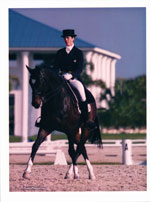
Ann Guptill is a professional dressage rider, trainer and instructor at her own Fox Ledge Farm in East Haddam, Connecticut, where she has lived since 1990. She and her husband, Edward Iarusso, started Equestrian Arts Productions and have been designing freestyles since 1995. Ann is a USDF Instructor Certification Examiner and a USDF “L” Judges Program graduate. She has served as chair of the Certified Instructors Committee, the Test Writing Committee and the Musical Freestyle Committee.



